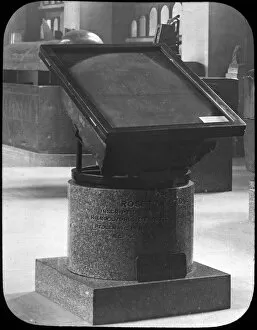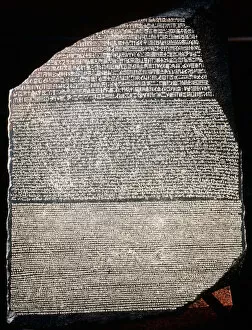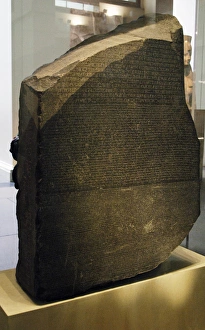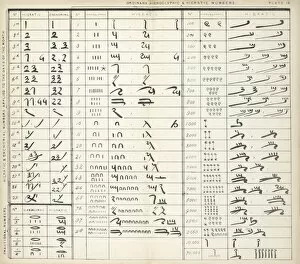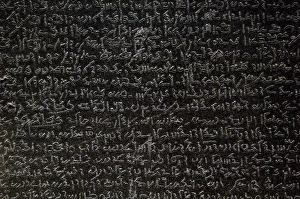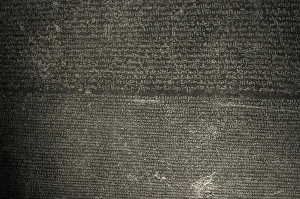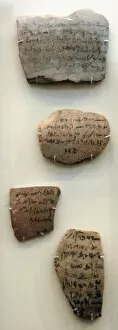Demotic Collection
The Rosetta Stone, housed in the British Museum in London, England, is a fascinating artifact that holds the key to deciphering Ancient Egyptian hieroglyphs
All Professionally Made to Order for Quick Shipping
The Rosetta Stone, housed in the British Museum in London, England, is a fascinating artifact that holds the key to deciphering Ancient Egyptian hieroglyphs. This ancient script, known as demotic, was used by the Egyptians during the Ptolemaic Period around 196 BC. Detailing intricate inscriptions from the Grand Temple d Isis a Philoe in Nubie, dating back to 1849/51, this stone provides valuable insight into the language and culture of this ancient civilization. The Rosetta Stone showcases both hieroglyphical and demotic scripture alongside Greek text. Considered one of Europe's most significant archaeological discoveries, this remarkable stone has captivated historians and linguists for centuries. Its importance lies not only in its age but also in its role as a linguistic bridge between different scripts. As visitors explore the British Museum's halls filled with artifacts from around the world they can drawn to this iconic piece. Its presence evokes awe and curiosity about how our understanding of history can be unlocked through careful study and analysis. The Rosetta Stone serves as a testament to human ingenuity and determination. It reminds us that even after thousands of years have passed since its creation, we continue to unravel mysteries left behind by ancient civilizations. So next time you find yourself wandering through London's prestigious museum district or planning your trip across Europe's historical landmarks, make sure to pay homage to this incredible relic – The Rosetta Stone – an enduring symbol of our quest for knowledge about our past.







